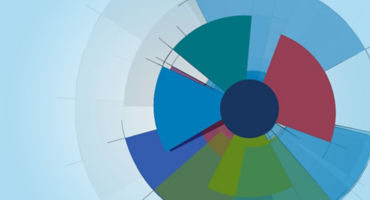- Fixed Income Portfolio Manager
Skip to main content
- Funds
- Insights
- Capabilities
- About Us
- My Account
The views expressed are those of the authors at the time of writing. Other teams may hold different views and make different investment decisions. The value of your investment may become worth more or less than at the time of original investment. While any third-party data used is considered reliable, its accuracy is not guaranteed. For professional, institutional, or accredited investors only.
A 2023 recession is more or less the consensus forecast for the US economy at this point. However, most market participants seem to believe the US can avoid the dreaded “hard landing” scenario as the labor market remains tight amid robust domestic consumption. We disagree and believe the US economy is likely to falter meaningfully in 2023, with the risk of many resulting job losses.
Remember, employment data is a lagging economic indicator, and our own review of high-frequency job openings data points to a likely deterioration in the US labor market that will potentially manifest within nonfarm payrolls and jobless claims data for the first half of 2023 (Figure 1).
The main pushback we’ve received against this view is that many US companies were super-keen to hire employees only six months ago, so they are unlikely to switch to cutting jobs so quickly. True, but what this argument misses is that US corporate profits look poised to fall sharply in the coming quarters.
Economy-wide corporate profits can be defined by a macroeconomic identity called the Kalecki-Levy Profits Equation, which equates profits to economy-wide consumption relative to savings:
Profits = Investment – Household Savings – Foreign Saving – Government Saving + Dividends/Share Buybacks
Using this equation, it is easy to see why US corporate profits have been so robust since the onset of the COVID pandemic. In 2020 – 2021, government spending vastly exceeded the increase in household savings that occurred during the pandemic. In 2022, as government spending receded, households drew on their savings, boosting consumption and therefore corporate profits too. However, these positive tailwinds for profits are now beginning to reverse:
All these factors suggest a negative outlook for US corporate profits in 2023. One rebuttal to this view is that profit margins are close to record levels, allowing room for them to come down without companies needing to slash employee headcount.
However, the US has had very low levels of productivity growth due to insufficient nonresidential investment over the past decade, meaning it won’t be so easy for many companies to maintain their margins. At the same time, companies with the highest margins have benefited from the market rewarding their stock prices relative to more cyclical businesses. Considering that market reaction, rather than take a hit to their margins, the more natural thing for management teams to do would be to just lay off employees — a trend we’re already starting to see in the tech sector.
Bottom line: We think many observers are underestimating the deterioration in the labor market that could occur due to worsening US profits in 2023. As a result, they may also be underestimating the severity of the recession that the US economy is likely to experience this year.
Experts



The spending bubble driving corporate profits looks set to burst
Continue readingThe rising tide of AI: How it could lift US productivity, growth, and profits
Continue readingRotations and reallocations: Rethinking equities
Continue readingTwilight zone: how to interpret today’s uncertain macro picture
Continue readingStagflation watch: Thoughts on tariffs, inflation, and Fed policy
Continue readingURL References
Related Insights
Related Insights

The spending bubble driving corporate profits looks set to burst
US corporate profits have been fueled by government deficits, low rates, and consumption — drivers now at risk, raising questions about the sustainability of market valuations.

Monthly Market Review — November 2025
A monthly update on equity, fixed income, currency, and commodity markets.

The rising tide of AI: How it could lift US productivity, growth, and profits
From an economic and market standpoint, a lot is riding on the future of artificial intelligence. Macro Strategist Juhi Dhawan sees plenty of reasons for excitement but also a need for patience along the way.

Quarterly Market Review — 3Q2025
A monthly update on equity, fixed income, currency, and commodity markets.

Rotations and reallocations: Rethinking equities
Since April's Liberation Day, equity markets have recovered losses and appear to be on an upwards trajectory. But under the surface of the highs, argues Equity Strategist Andrew Heiskell, is a market and an economy looking for direction. Why is the economy so stuck?

Twilight zone: how to interpret today’s uncertain macro picture
Macro Strategist John Butler and Investment Director Marco Giordano explore how to interpret today’s uncertain macroeconomic picture and its key implications.

Stagflation watch: Thoughts on tariffs, inflation, and Fed policy
US Macro Strategist Juhi Dhawan considers signs the US economy may be moving toward a toxic mix of slowing growth and rising inflation, creating challenges for the Fed and investors.

Weighing the economic winners and losers of the One Big Beautiful Bill Act
Macro Strategist Juhi Dhawan unpacks the impact of One Big Beautiful Bill Act, including its potential effect on economic growth, corporate earnings, and the US government deficit and debt.

Could the global policy response misfire?
In their mid-year macro outlook, Macro Strategists John Butler and Eoin O’ Callaghan discuss how the global policy response to the trade shock could misfire, with major implications for investors.

International equities: Five reasons they may not be a one-hit wonder
Global Investment and Multi-Asset Strategist Nanette Abuhoff Jacobson explains why those who doubt the staying power of the recent outperformance of international equities may want to reconsider.

Monthly Market Review — January 2025
A monthly update on equity, fixed income, currency, and commodity markets.
URL References
Related Insights
Monthly Market Review — November 2025
Continue readingBy